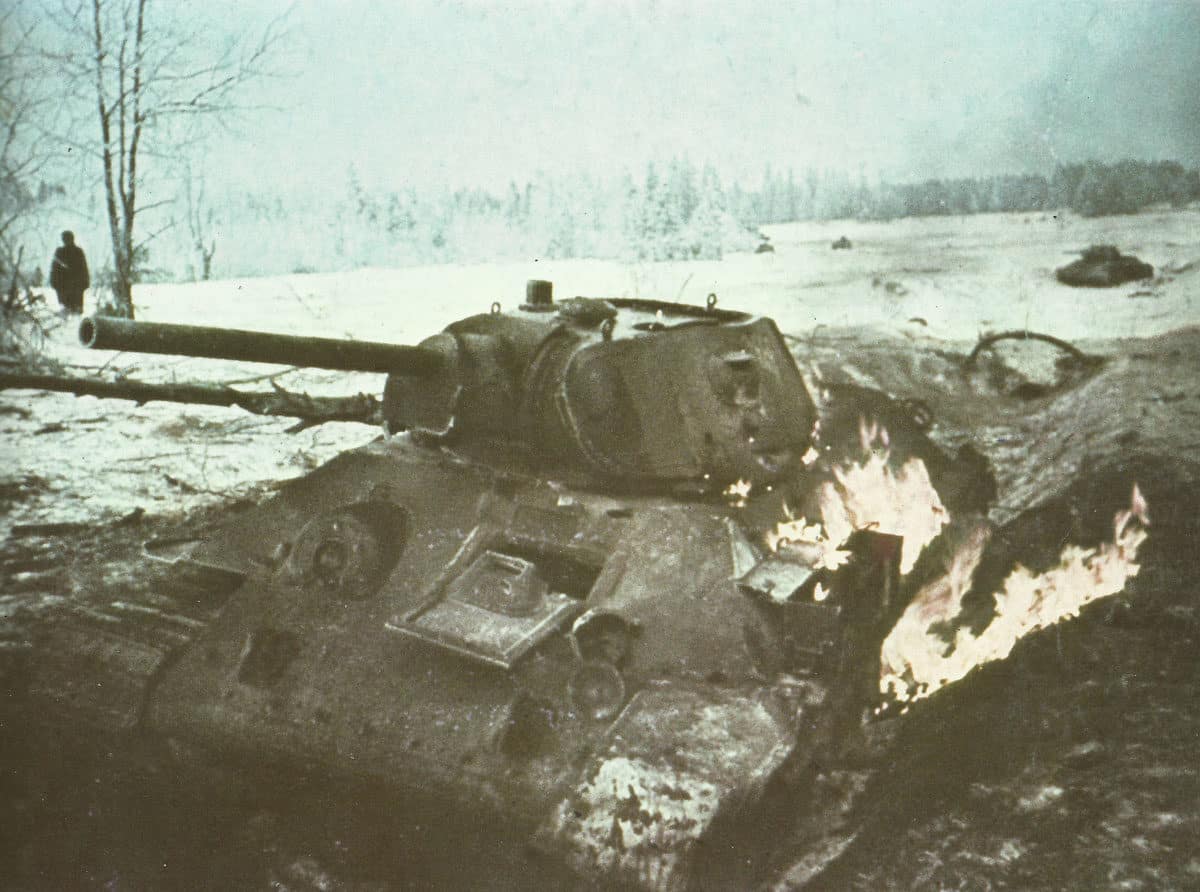Ballistic missile A-4, German revenge weapon V-2.
History, origin, development, production and difficulties until operational debut and specifications.

A-4 (V-2)
Type: Ballistic missile.
History
Table of Contents
The German V-2 was the first ballistic missile in the world to be used in combat. From a scientific point of view, it was a technological miracle that for the first time used many of the key techniques of missile technology. From the military point of view, however, it was a waste because it was too far ahead of its time and only advances in other technologies made the ballistic missile a dangerous weapon.
The origin ballistic missiles
In the 1920s and 1930s, liquid-fuel rocket technology became a widespread field of interest in young scientists worldwide, who were enthusiastic about the ideas of science fiction authors about space flights. These young scientists laid the foundations for the rocket developments of the Second World War.
In contrast to other nations, however, the German army recognized the potential of missiles and from the 1930s supported these young scientists with financial means, facilities and additional personnel.
The most important supporter in the German army was Lieutenant-Colonel Karl Becker, who was already involved in the development and deployment of the Paris gun in World War One and now regarded the ballistic missile as a more advanced form of long-range artillery. In Becker’s staff of the ‘Ballistic Munitions Department’ of the army was also the young artillery officer Captain Walter Dornberger, who was later to lead the V-2 program.
After experiments with solid rockets in 1929 and 1930, however, Becker’s interest shifted to liquid rockets, as they promised greater ranges and payloads. Becker convinced Werner Freiherr von Braun, a talented young member of an amateur rocket research group in Berlin, to help develop liquid rockets. Von Braun was at that time a PhD student in physics at Berlin University and the facilities of the artillery test site in Kummersdorf were made available to him for these experiments.
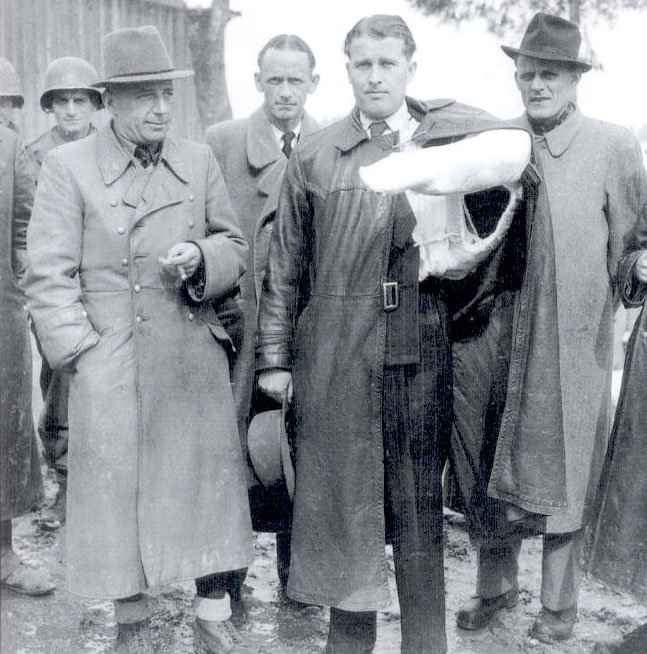
Until Hitler took power, this German missile program was only very small, but since there were many technology enthusiasts under the Nazi leadership, the project of this future weapon was constantly expanded.
Since the program was conducted under absolute secrecy, von Braun proposed a test site on the Baltic Sea, which was later opened in Peenemünde on Usedom in May 1937.
The first rocket of the program was the A-1 (aggregate 1) with a weight of only 298 lb (135 kg) and a thrust of 662 lb (300 kg). This rocket took six months to build and exploded in half a second at launch.
The following A-2 was a revised version of the first rocket and two of them reached an altitude of 2,625 yards (2,400 metres) in 1934.
The next rocket, the A-3, had 3,311 lb (1,500 kg) of thrust. The first two launch attempts failed due to control problems and the following two launches showed considerable difficulties with the control of the missiles after launching.
Development of the A-4
Despite these meager results, the German army approved the development of the A-4 missile in 1936. This was first developed under the pretense of a weapon and was later given the propaganda name V-2. In order to obtain the permits more easily, Dornberger promised an explosive load of one tonne over a range of 168 miles (270 kilometres) and operational readiness until 1943.
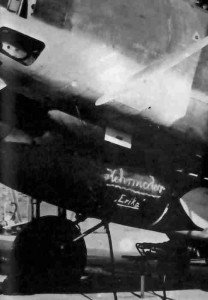
At next the A-5 was developed, which was only half the size of the A-4. From October 1938 two dozen launches were carried out by this missile and the new inertial control system was perfected by the end of 1941.
Meanwhile, the A-4 program has achieved a number of critical technology breakthroughs and many of its innovations are still being applied to missile designs today.
The first test missile A-4V1 was completed on 25 February 1942 and when it was launched on 18 March 1942, it failed. Also, the second test missile on 13 June 1942.
The third A-4V3 took off on 16 August 1942, but suffered a number of sub component failures. Nevertheless, it reached an altitude of 38,386 ft (11,700 metres) before the engine failed.
The first successful flight took place on 3 October 1942 with the A-4V4, which flew 118 miles (190 kilometres) out into the Baltic Sea and hit only 2.5 miles (4 kilometres) from its target.
The tests continued more or less successfully and sometimes dangerously until mid-1943. However, these tests were so promising for the new weapon that Hitler approved series production on November 22, 1942. Dornberger’s promise to Hitler that the Army’s A-4 would compensate for the Luftwaffe‘s failure at the Battle of Britain also made sure of this.
V-1 vs V-2
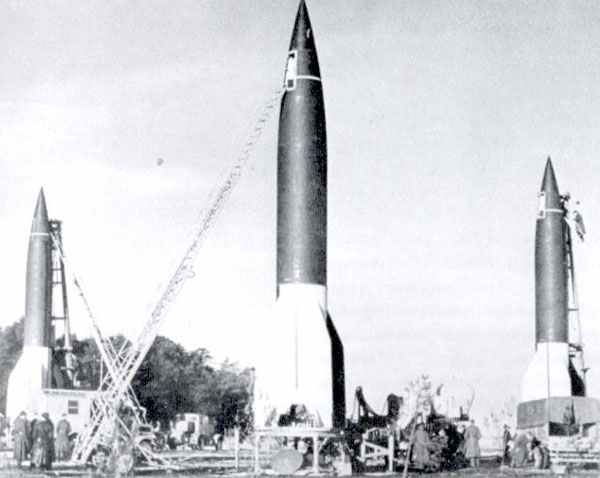
This provoked Göring and the Luftwaffe to start the project of the Fieseler Fi 103 ‘flying bomb’ in 1942. This V-1 was very simple and an almost coarse weapon compared to the sophisticated A-4 missile, but later proved to be much cheaper to develop and produce.
At the end of 1942, Armaments Minister Speer set up a commission to investigate the advantages of both weapons. This commission decided by May 1943 that both weapons should be used in combat. They justified it by saying that the Fi 103 was not particularly accurate and that its relatively low speed made it vulnerable to anti-aircraft guns and fighter defense. But at the same time the bomb was so cheap that it could be fired in large numbers without hesitation. But since the Fi-103 had to be fired from static ramps, it also made it vulnerable to enemy air raids.
On the other hand, the A-4 missile could be launched by less sensitive, mobile launchers and could not be intercepted.
The release of both weapons was also influenced by the steadily deteriorating course of the war. After the Battle of Kursk, the Red Army had taken the initiative on the Eastern Front and was no longer to give it up. Thus, Hitler and other Nazi leaders began to regard the secret weapons of Peenemünde as a patent remedy for their strategic mistakes and dreamed of being able to change the course of the war with them. Therefore, the missile programs received more and more support from the Nazi leadership, although the German arms industry was already under great pressure to produce sufficient quantities of conventional weapons for the fronts.
The development costs of the ballistic missile A-4 were breathtaking. According to an American post-war study, the total value at that time was 2 billion US dollars, about the same amount as the Americans spent to build their atomic bomb.
British reaction
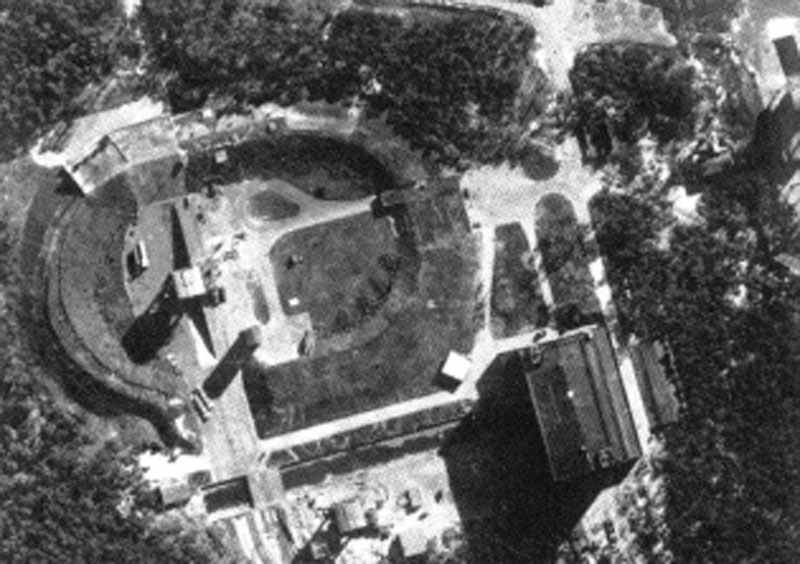
In August 1943, the RAF bomber command surprised the Peenemünde missile testing facility. Although the German missile program was under the greatest secrecy, unavoidable news leaks occurred because forced laborers were used to produce the A-4 in Peenemünde.
As early as December 1942, a Danish chemist reported that the Germans were testing missiles with a range of 186 miles (300 kilometres) from a location on the Baltic Sea. The rumor was confirmed by German officers captured in North Africa.
The British became aware of the possible situation of the experimental station when the Polish resistance reported to London in early 1943 that forced laborers from Poland had reported that the development of German rocket engines was taking place on Usedom. In the spring of 1943, more detailed news arrived from Polish and Luxembourg forced laborers. British reconnaissance flights over Usedom began at the end of April 1943, providing the first hard facts about the existence of the A-4 missiles.
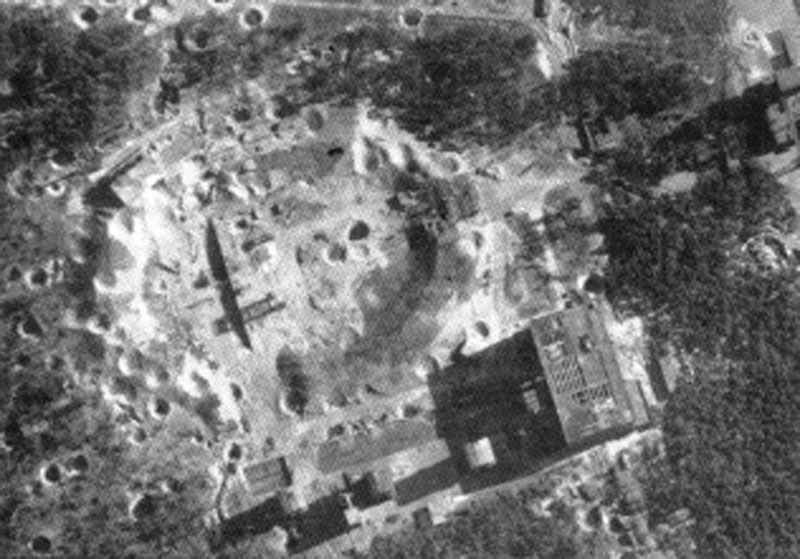
On 29 June Churchill authorized the attack of the RAF bomber command on the German rocket test facility for the night of 17-18 August 1943. ‘Operation Hydra’ was to hit the quarters of the German rocket technicians, as their deaths would have the greatest impact on the program. However, only the first wave hit the German quarters and faulty flare markings caused one third of the bombs to hit the forced labor camp to the south. Also the production plant for the A-4 was not hit correctly because of wrongly set off flare marking bombs.
The 520 heavy bombers, which among other types were involved in the raid, dropped about 1,875 tons of bombs, whereby 40 bombers were lost. There were 735 casualties on the ground, 213 of them forced laborers. However, only two German rocket technicians died.
Building the V-2
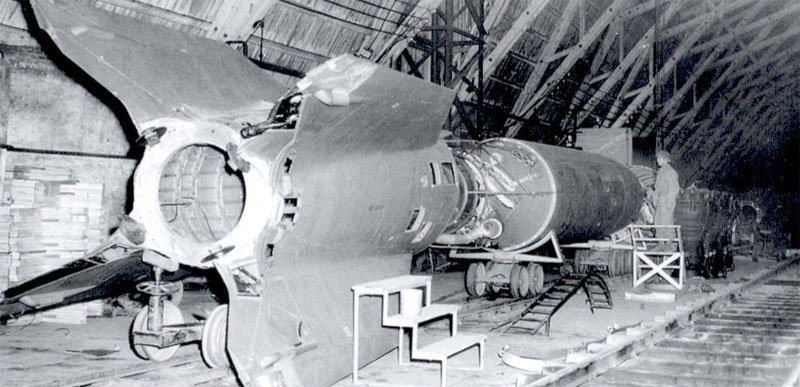
As a result, series production of the A-4 rocket was outsourced from the Army Research Station in Peenemünde to the underground complex near Nordhausen. However, this Mittelwerke company was operated by the SS with forced laborers from the Dora labor camp, which was a branch of the Buchenwald concentration camp. This led to an increasing influence of Himmler on the rocket program, since his SS controlled all concentration camps and labor camps.
SS brigade leader Hans Kammler, who had already been involved in the establishment of the top secret extermination camps Auschwitz-Birkenau, Majdanek and Belzec, increasingly took over the management of the Mittelwerke.
The appalling working and accommodation conditions there led to a high death rate among the forced laborers. Of the 60,000 prisoners there, about one third died of illness, malnutrition, executions and the death marches during the evacuation in the spring of 1945 until the end of the war. A good 10,000 of these deaths can be attributed to the A-4 construction program, which thus far exceeds the number of deaths at the targets of the ballistic missile.
The first five A-4 missiles in the Mittelwerk were completed on 31 December 1943, but were produced too hastily. The planned construction rate of 900 rockets per month was never reached and over 600 units were not produced until September 1944.
The production of the missile was stopped in March 1945, after the last suitable fire positions in the West had been lost.
A-4 missile manufacture | Peenemünde | Mittelwerk | Total |
|---|---|---|---|
to 1944 | 300 | 0 | 300 |
Jan 1944 | 30 | 50 | 80 |
Feb 1944 | 30 | 86 | 116 |
Mar 1944 | 20 | 170 | 190 |
April 1944 | 15 | 253 | 268 |
May 1944 | 15 | 437 | 452 |
June 1944 | 15 | 132 | 147 |
July 1944 | 15 | 86 | 101 |
Aug 1944 | 15 | 374 | 389 |
Sep 1944 | 15 | 629 | 644 |
Oct 1944 | 15 | 628 | 643 |
Nov 1944 | 15 | 662 | 677 |
Dec 1944 | 5 | 613 | 618 |
Jan 1945 | 0 | 690 | 690 |
Feb 1945 | 0 | 617 | 617 |
March 1945 | 0 | 490 | 490 |
TOTAL | 505 | 5,917 | 6,422 |
The bottleneck
The bottleneck for the A-4 operation was the production of liquid oxygen (LOX) for the rocket engine. The total production in Germany and the occupied territories was about 215 tons, which was sufficient for 15 launches per day. Three new liquid oxygen plants for a further 15 launches a day were built in launch bunkers for the ballistic missile.
The technicians in Peenemünde preferred launch bunkers in order to be able to properly service the complicated rockets before they were launched. In addition, 5 additional tons of liquid oxygen would evaporate daily if the missiles were launched too far from the fuel production site, further reducing the number of daily launches.
Artillery officers of the army and Dornberger, on the other hand, preferred mobile launch platforms in order to reduce the danger of allied air attacks. Despite the Army’s opinion, Hitler approved the bunkers on March 29, 1943.
None of these bunkers ever fired an A-4 missile. First the bunkers were attacked by allied bombers already during the construction and after the landing in Normandy they were conquered one after the other unfinished by allied troops.
Problems with field trials
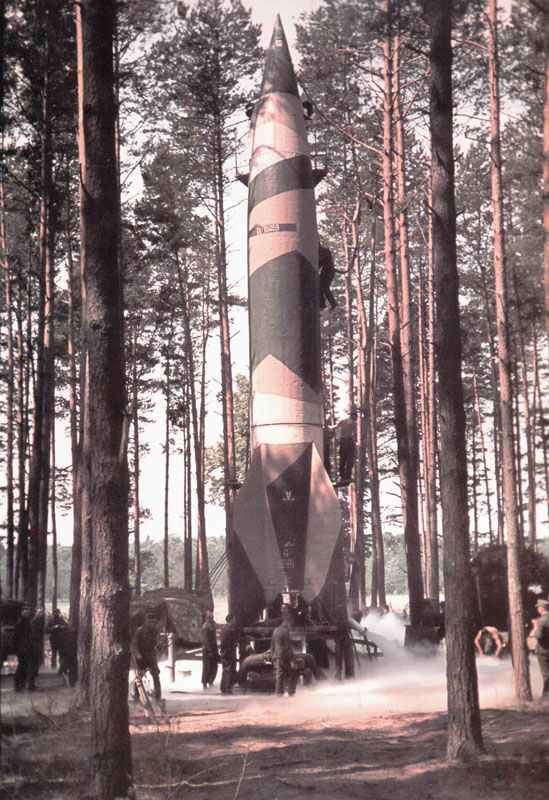
After the British air raid on Peenemünde, the mobile training and experimental battery 444 was moved to a former Polish artillery firing range near Blizna, which was operated by the Waffen-SS as the ‘Heidelager’ camp. There began the launch of the A-4A, the 300 rockets produced in Peenemündee in 1943. Later the A-4B followed, which was easier to build.
The attempts became a fiasco, because until the end of March 1944 only 26 of 57 missiles went into the air. Only seven successfully hit the ground, four of them near the target. However, not a single warhead exploded.
Since there were no devices to monitor the final flight of a rocket at that time, the reasons remained a mystery. After the better insulation of the tanks against heat and an additional sheet metal cap in the front part with the A-4C in April 1944, 80 test launches were successful on 30 August 1944.
The Polish resistance supervised these experiments and reported them to London. At the end of May 1944 they were even able to recover a largely intact rocket that had crashed into the river Bug. Parts of the rocket were picked up by a RAF Dakota flown in from Italy on 25/26 July.
A second A-4 from Peenemünde hit Sweden on 13 June 1944. The technical report of the Swedes was passed on to the Allies and also the British and American military attaches were allowed to inspect the rocket on 6 July and take parts with them.
Since the control of the rocket could not be disturbed by radio, this nevertheless did not help the Allies with countermeasures.
Meanwhile, Himmler had also ordered his Waffen-SS to convert the rocket launcher Abteilung 500 for the launch of the prestigious missile. After the Stauffenberg assassination on July 20, 1944, Hitler became more and more paranoid towards his surroundings and the army, and finally, in August 1944, Hans Kammler, already chief of the infamous Mittelwerk, was appointed SS Special Commissar for the deployment of the V-2. Gradually he took over the tactical control of the missile units.
On September 2, 1944, control of the A-4 missiles was withdrawn from the 65th Corps of the Army and handed over to Kammler. He organized the two existing launcher batteries into the South Command (Artillery Abteilung 836) and the North Command (Artillery Abteilung 485 plus the former Test Battery 444 from Blizna).

Specifications V-2
Ballistic missile A-4 (V-2) | Specifications |
|---|---|
Length | 45.93 ft (14.0 m) |
Diameter | 11.8 ft (3.6 m) at fins; 5.38 ft (1.64 m) at fuselage |
Launch weight | 27,410.6 lb (12,417 kg) |
Empty weight | 8,465.8 lb (3,835 kg) |
Fuel weight | 7,616 lb (3,450 kg) methyl alcohol; 10,938 lb (4,955 kg) LOX; 380 lb (172 kg) hydrogen peroxide; 28.7 lb (13 kg) sodium permanganate |
Warhead | 2,152 lb (975 kg) blast warhead with impact fuzing with 1,611 lb (730 kg) cast 60/40 Amatol high explosive filling |
Guidance | Inertial with gyros for roll, pitch, yaw and azimuth control; range control by integrating accelerometer |
Control surfaces | 4 graphite vanes in rocket efflux for pitch and azimuth; 4 rudders on fin for roll and yaw |
Engine | Liquid-fuel rocket using turbopump for fuel injection; 12-19 sec warm-up thrust; 55 sec at full power of 75,055 lb (34,000 kg) thrust |
Maximum range | 195 miles (314 km) |
Apogee | 57.95 miles (93.3 km) |
Speed | 5,61 ft/sec (171 m/sec) at engine cut-off; 433 ft/sec (132 m/s ec) at apogee; 604 ft/sec (184 m/sec) at re-entry, 423 ft/sec (129 m/sec) at impact |
Flight time | 330 seconds |
References and literature
V-2 Ballistic Missile 1942-52 (Steven J. Zaloga)
Die deutschen Geheimwaffen – Der Zweite Weltkrieg (Brian Ford)
Luftkrieg (Piekalkiewicz)








